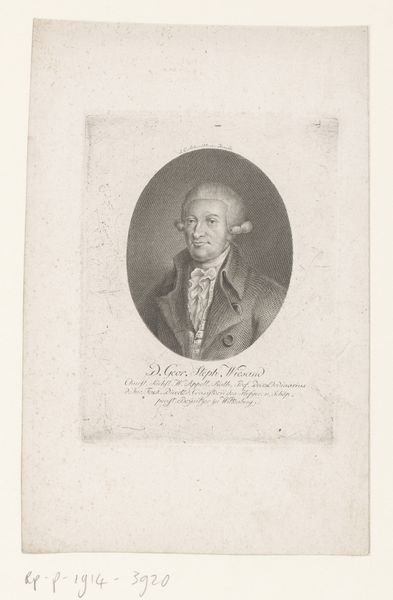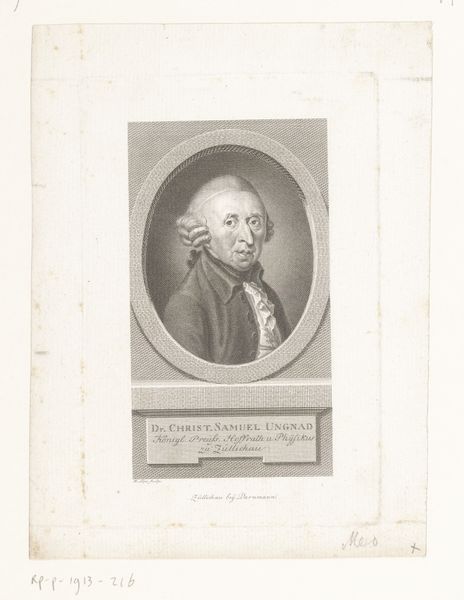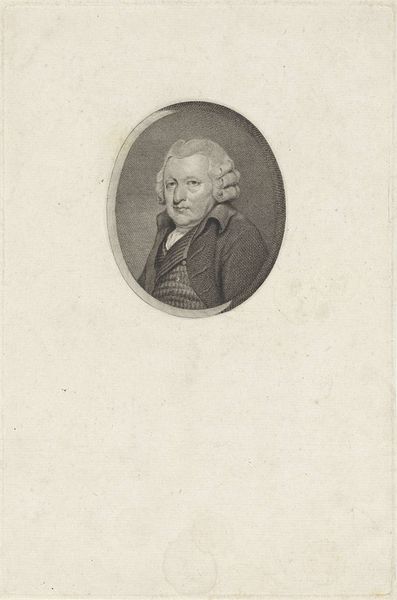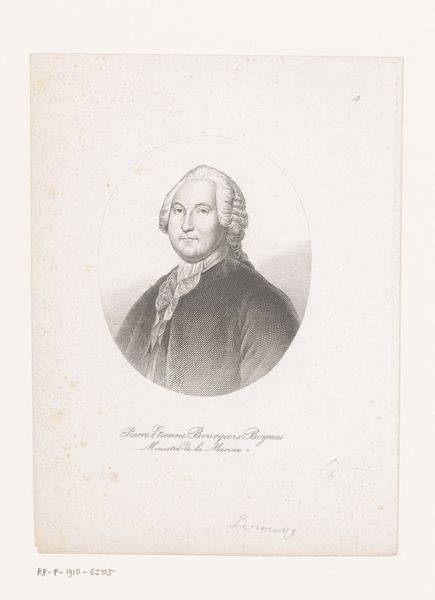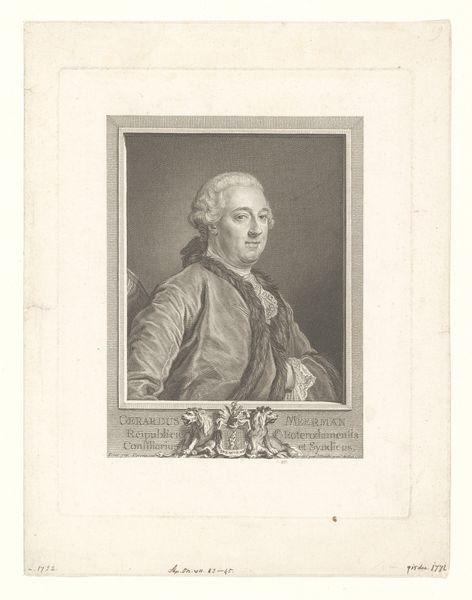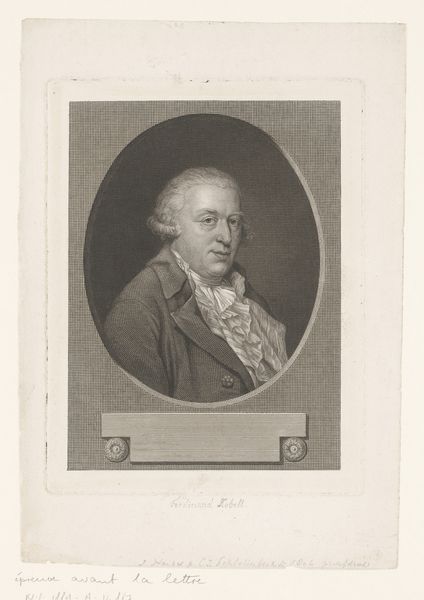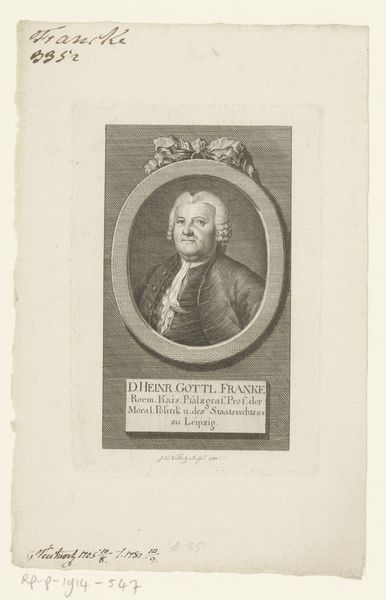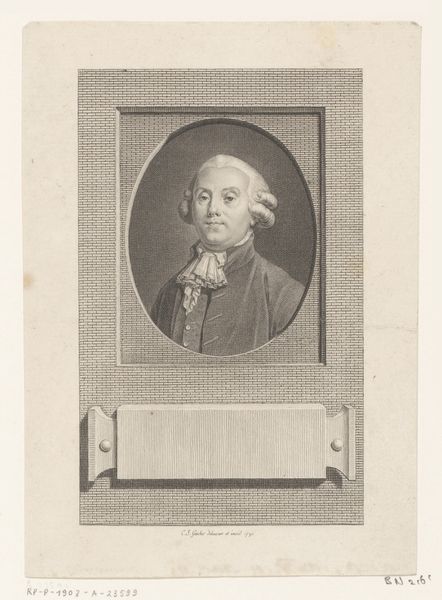
drawing, engraving
#
portrait
#
drawing
#
neoclacissism
#
engraving
Dimensions: height 215 mm, width 135 mm
Copyright: Rijks Museum: Open Domain
Curator: Welcome to this gallery. Here we have "Portret van Jean-François de La Harpe," crafted sometime between 1796 and 1802 by François Bonneville. It is a striking neoclassical portrait rendered in engraving. Editor: Oh, he looks so serious! Almost comically severe, as if life has never served him dessert. I wonder what was he thinking about when this image was captured? Curator: It's certainly evocative. Note how the artist uses the medium, creating a stark contrast within the oval frame. The meticulous stippling brings depth, while the incised lines define the contour of the face, really highlighting the physiognomy, almost clinically so. The gaze meets our own directly. Editor: Yes, a very firm gaze! Almost accusatory, perhaps? I keep wondering about his story. That's a whole other country, with its wigs and philosophers, far away. But I am struck by the immediacy of it, despite the obvious differences in our lived experiences, time and all that. Curator: Absolutely. Bonneville masterfully uses the graphic qualities of engraving to capture the sitter's personality but equally for compositional impact and, ultimately, to project that neoclassical aesthetic valuing clarity, order and directness above all else. Editor: You're right! I suppose I am responding to something beyond the individual and rather the way in which the figure conforms to the time it comes from. Still, he seems slightly… ill at ease, maybe? The stiff pose betrays a more fluid nature? Curator: Perhaps! Engravings were, in the late 18th and early 19th centuries, means of conveying the image of power and prestige. This may have demanded more than some individuals had available, or cared for. Editor: Interesting perspective. The context changes everything. So he represents less an individual, than an idea of that individual, mediated by the artist. Well, I am happy to see how he has survived all these years for us to speculate. Curator: It is certainly a potent reminder of the enduring dialogue between art, representation and societal context, one we continue today in different ways.
Comments
No comments
Be the first to comment and join the conversation on the ultimate creative platform.
